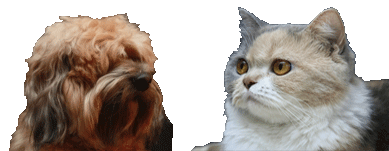Vet Terminology starting with E on Bruning.com – from Ear Canal to Extrahepatic
[A][B][C][D][E][F][G][H][I][J][K][L][M][N][O][P][Q][R][S][T][U][V][W][X][Y][Z]
Ear canal –
The tube that connects the external ear with the ear drum.
Ear drum –
The membrane that divides the outer ear from the inner ear, where the mechanism of hearing takes place. The membrane prevents infection from reaching the inner ear, as well as vibrating to amplify sounds.
Ear mites –
Small parasitic insects that live in the ear canal of an animal, and that are able to survive outside the ear for only very short periods of time.
Ecdysis –
Shedding of the external layers of the skin in reptiles.
ECG –
A printout of an analysis of the electrical activity in the heart.
Echocardiogram –
The image produced by performing an ultrasound examination of t
he heart.
Ectoparasite –
A parasite that lives on the outside surface or skin of another animal. Ectoparasites include fleas, ticks, lice, and mange mites.
Ectopic –
Non-malignant tissue growing in an unusual location (e.g., an ectopic pregnancy is conception of a normal embryo outside the normal location, which is the uterus).
Edema –
A condition in which the tissues of the body contain too much body fluid. The fluid accumulation may cause swelling in the affected area.
EKG –
A printout of an analysis of the electrical activity in the heart.
Electrocardiogram –
A printout of an analysis of the electrical activity in the heart.
Electrocautery –
An instrument with a very hot tip, heated by electricity, is applied to a tissue. Electrocautery may be used to make an incision, remove a mass, or to stop bleeding.
Electrolyte –
Chemically, an element when dissolved in water, will cause the solution to transmit electricity. In medicine, certain elements in the blood which are critically important to life, including sodium, potassium, chloride, calcium, and phosphorous.
Electroretinography –
The recording of electrical changes in the retina of the eye in response to stimulation by light.
Elizabethan collar –
A large, plastic, cone-shaped collar used on cats, dogs, and birds to prevent them from licking or biting at skin, wound dressings, or casts.
Emaciation –
The severe loss of body weight; body weight is generally less than 50% of that in a normal animal.
Emesis –
Vomiting.
Encephalitis –
Inflammation of the brain; often caused by a virus.
Encephalopathy –
Any degenerative disease of the brain. Causes include liver disease resulting in the buildup of toxic by-products of metabolism, heavy metal (e.g., lead) poisoning, and loss of blood supply.
Endocrine –
Pertaining to the secretion of hormones. The endocrine system consists of various glands which produce hormones.
Endoscope –
A long flexible instrument which can be passed into the body to view various structures through the use of fiber optics.
Endotracheal tube –
This tube is placed into the animal’s trachea (windpipe) to allow the oxygen and gases to be breathed into the lungs.
Enteral feeding –
A method to feed an animal in which a tube is placed through the body wall into the intestine, and a nutritious liquid is forced through the tube into the intestine.
Enteritis –
An inflammation of the intestines.
Envenomation –
The act of injecting a poisonous material (venom).
Enzyme –
Enzymes are special proteins produced by cells which cause chemical changes in other substances, but which are not themselves changed in the process.
Eosinophil –
A type of white blood cell that commonly increases in numbers as a response to parasites and allergies.
Eosinophilia –
A condition in which there are more than the usual number of eosinophils in the circulating blood.
EPA –
Environmental Protection Agency. The agency of the federal government which licenses pesticides and herbicides.
Epidermis –
The top layer of the skin.
Epiphora –
An overflow of tears upon the cheeks due to a blockage or narrowing of the tear ducts.
Epistaxis –
Bleeding from the nose.
Erosion –
A shallow defect in the skin. When healed, it will not cause a scar.
Erythema –
Redness of the skin caused by blood clogging in small blood vessels.
Erythrocyte –
Red blood cell; contains hemoglobin, which carries oxygen to the tissues.
Esophageal reflux –
A condition in which stomach contents move backward into the esophagus, i.e.,
heartburn.
Esophagusv –
The muscular tube for the passage of food from the mouth to the stomach.
Estrogen –
A female hormone produced by the ovaries, which results in the onset of estrus.
Estrus –
The time when a female animal is fertile and receptive to the male. Also known as a heat period.
Exophthalmos –
The abnormal outward protrusion (bulging) of the eye.
Exotic –
An animal not native to the geographical area where it is living.
Extensor rigidity –
A condition in which muscles contract and tend to straighten the limb, prevent it from relaxing.
Extracranial –
Originating external to the cranial (brain) cavity.
Extrahepatic –
Outside of the liver.

